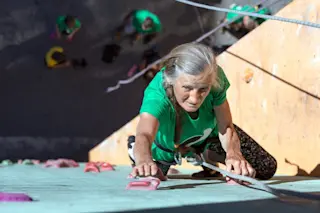Aging is inevitable and is influenced by many things – but keeping active can slow aging and increase life expectancy. Evidence shows that ageing alone is not a cause of major problems until you are in your mid-90s. And strength, power and muscle mass can be increased, even at this advanced age.
So here are my top exercise tips for people in their 60s and older, at different levels of fitness.
If you fall into this group, you are in the minority. You are robust, likely to be a “super-ager” and you are doing wonderfully. You are certainly optimizing your chance of living longer and aging successfully.
Generally, this is when you reap your reward from a lifetime of keeping active. With your healthier metabolic, skeletal, cardiovascular and immune systems you can probably outperform people decades younger.
Keep up the kettlebells, spin classes, rowing, triathlons or manual work such as ...














